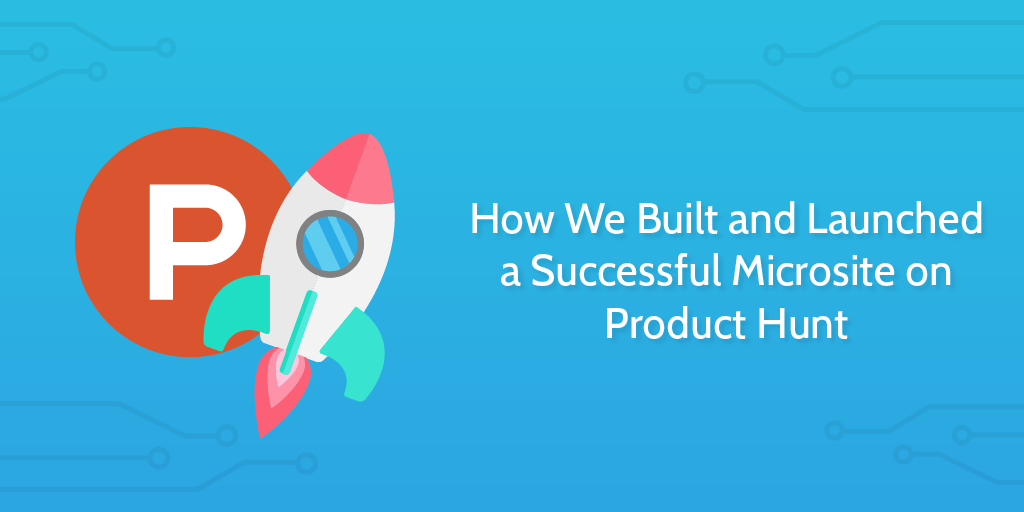
On August 25th, we launched a library of 1000+ real sales and emails from the top 280 SaaS companies.
The library was hosted on a microsite, Inside SaaS Sales, which allows users to browse the full sales cadences, organized in the order the message or voicemail was sent.
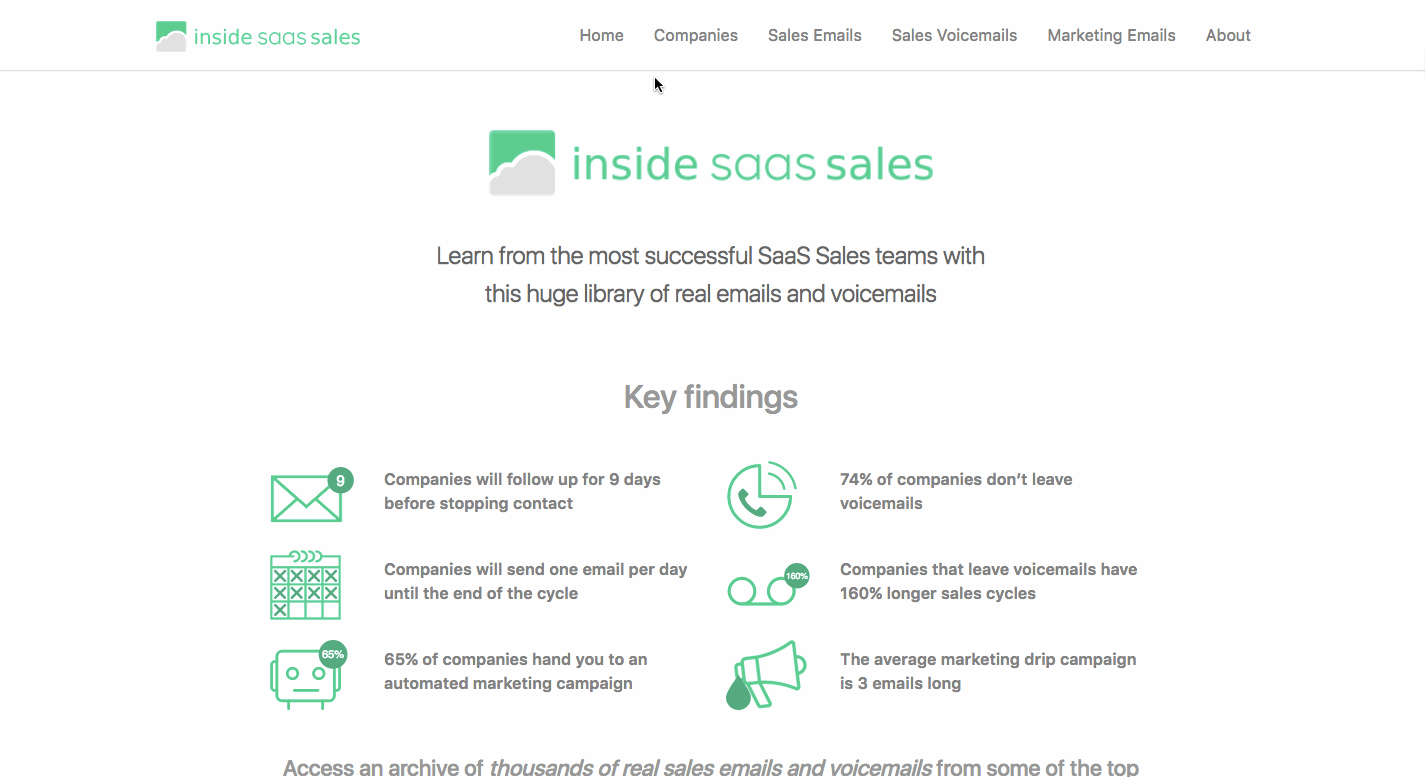
The launch landed us almost 800 votes on Product Hunt, 10,000+ site visits, a mention in Hiten Shah‘s SaaS Weekly, and publicity from the SaaS and VC community.
What We Learned Analyzing 281 Full Sales Cycles (1,183 Emails & Voicemails) https://t.co/vKFE0ehBaR pic.twitter.com/1wCviSbZq6
— Hiten Shah (@hnshah) September 5, 2017
VERY cool insights on #sales. @processstreet analyzed 281 full sales cycles, including 1,183 emails and voicemails. https://t.co/RlmOEX43Io pic.twitter.com/pbyDh0yHpf
— noah kagan (@noahkagan) September 5, 2017
It brings in long-tail organic traffic, and acts as a source of leads for Process Street since we offer sales checklists as a promotional opt-in on the site.
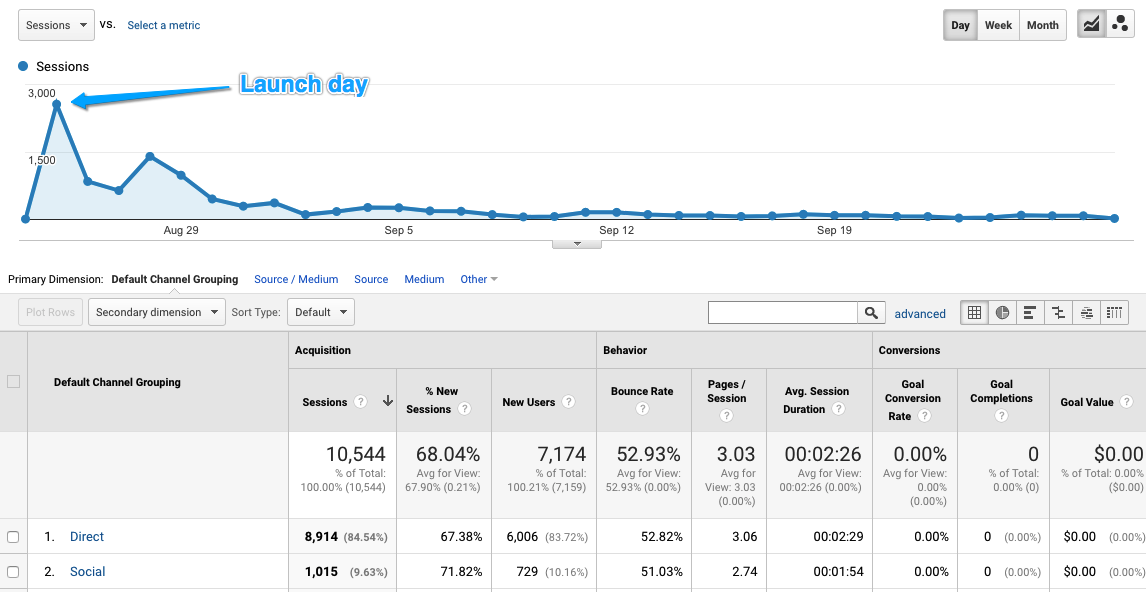
This is the story of how we launched our first microsite, and how you can do the same.
The idea
Like every other product, the idea for Inside SaaS Sales came from our own needs. As a SaaS startup building a sales team from scratch, we wanted proven methods from successful companies we respected, not just templates. Templates might be easier to use, but they’re not real examples.
A quick search of SaaS sales emails and basically everything is just… templates.
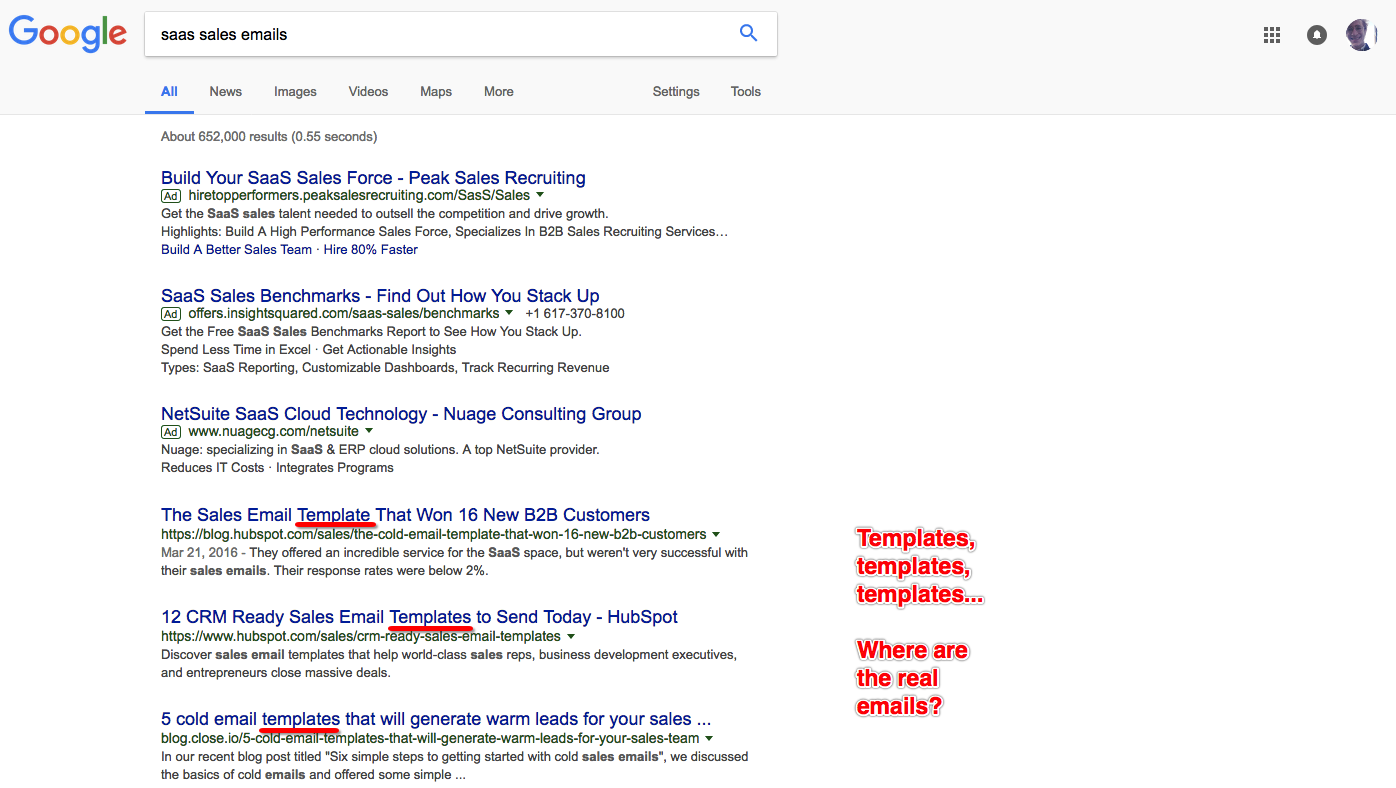
And, it seems everybody else feels the same way.
Searching on Google will get you templates but the products that really strike a chord on Product Hunt are all libraries of real emails.

Good Email Copy, Good Sales Emails, Great Email Copy, and Really Good Emails were all very popular. They’re awarded with product of the day/week/month accolades, one got a Golden Kitty, and each have hundreds of upvotes, and they now rank in Google for terms like ‘best sales emails’.
Since we were already planning to gather real sales emails for research, we thought it makes sense to turn it into a product, too. Especially a product that’s proven to be popular. While there are already sales email libraries out there, a SaaS-focused library would be useful to a specific kind of reader, and easier to rank for long-tail keywords in Google.
With a general idea of the kind of data we wanted to present and how we wanted to present it, we set off to gather some real sales emails in the wild!
Gathering data
Before we could get data, we needed to select which companies we’d analyze. The definitive list of top SaaS companies is the SaaS 250 from Montclare, but we didn’t just want to chase the old names. We mixed the list half-and-half; half from the top 250 by revenue on Montclare, and half by funding on Angel List. Overall, it was 350+ companies. Discounting the ones that’d shut down and the ones that didn’t reply, we ended up with sales emails and voicemails from 280 companies.
What’s the best way to automatically collect the full sales cadences of 280 SaaS companies?
For a start, we needed a lead to go through the sign up process and get trials and demos of these SaaS products. We decided to create a profile for a fictional Vodafone employee:
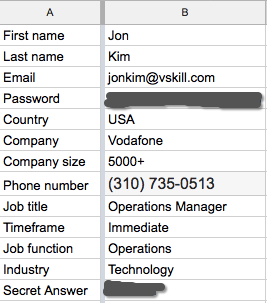
Before we started signing up for products, we also needed a way to automatically capture the incoming emails and voicemails.
Capturing emails
We used Zapier to connect Gmail to Google Sheets and format the emails into a spreadsheet automatically.
With the integration set to trigger when a new email is sent to our fake lead’s address, we set the action step up to format the email variables into rows:
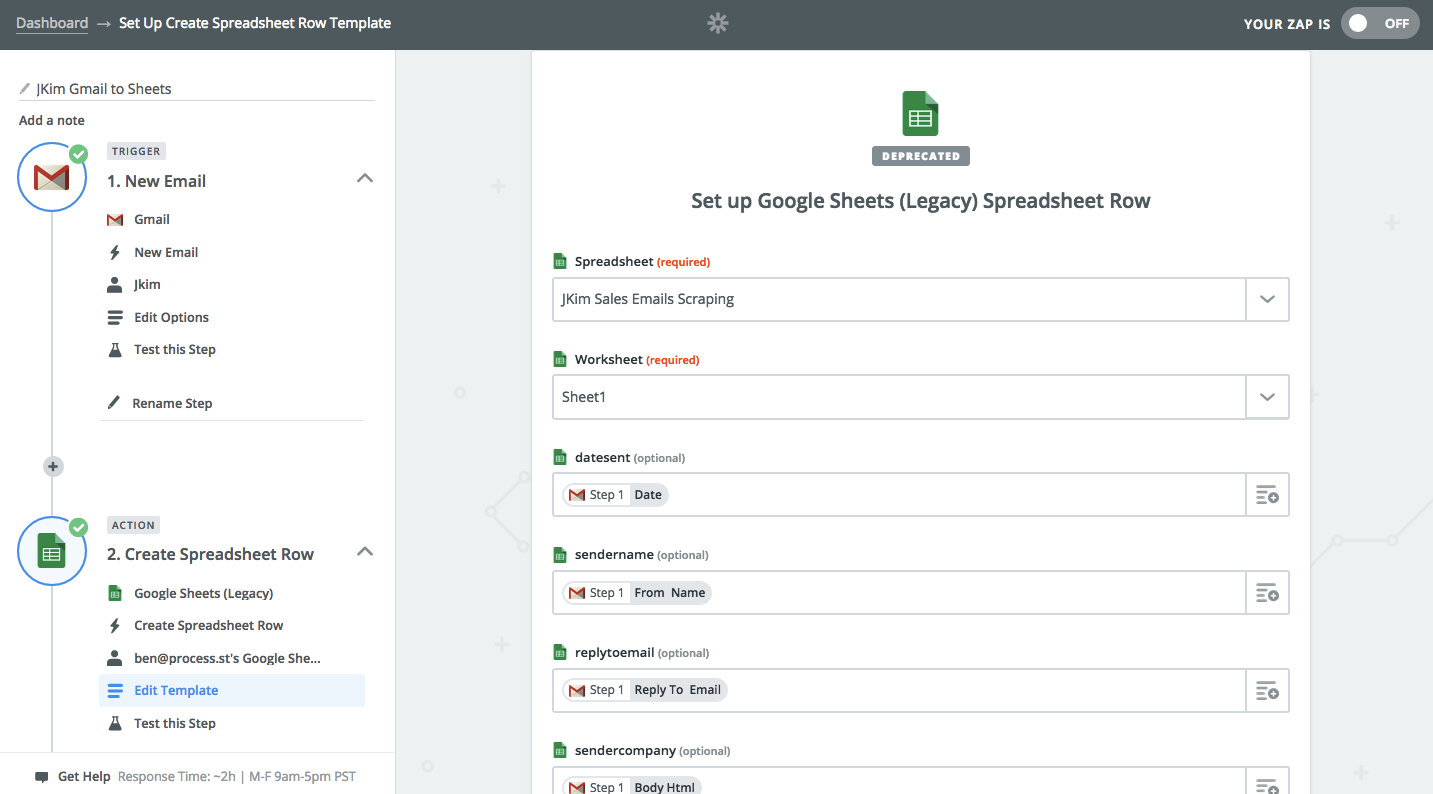
After that, it was simply a matter of getting those details into the SaaS companies’ databases in the cleanest, fastest way possible. Usually, that involved signing up for a demo or a free trial. There’s no shortcut here. It’s a matter of spending a day copy-pasting, or delegate it to a virtual assistant.
Capturing voicemails
We got a phone number attached to Grasshopper, a service that could save digital recordings and transcriptions of our voicemails, and even email us the transcripts. That made it super easy to log in Google Sheets using the same methods as we used to gather the emails.
We made a new zap in Zapier that listens for new emails from [email protected] and formats the text in a new sheet.
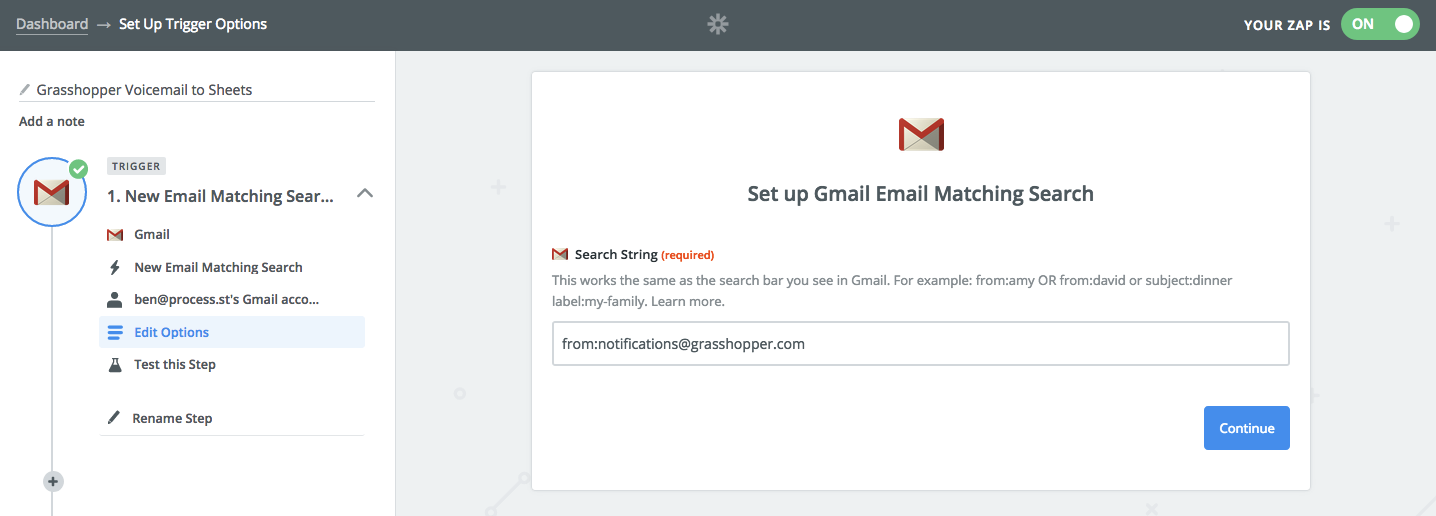
After a few weeks, we’d collected a huge sheet of emails and voicemails. Now we just needed to make sense of the data.
Data analysis, and formulating the key points
Spreadsheets lend themselves well to analyzing simple data, but nothing beats a proper database. Google Sheets was used for data clean-up thanks to the add-ons for advanced find and replace. Cleaning up the data took a solid week; it involved using RegEx to remove links, html tags and special characters, plus manually correcting mistakes in the voicemail transcriptions.
We moved the data into Airtable because that meant we could use separate tabs for emails, voicemails, companies, and contacts — all while keeping the records linked together so they were easy to summarize and analyze. (For more information on how we use Airtable, click here).
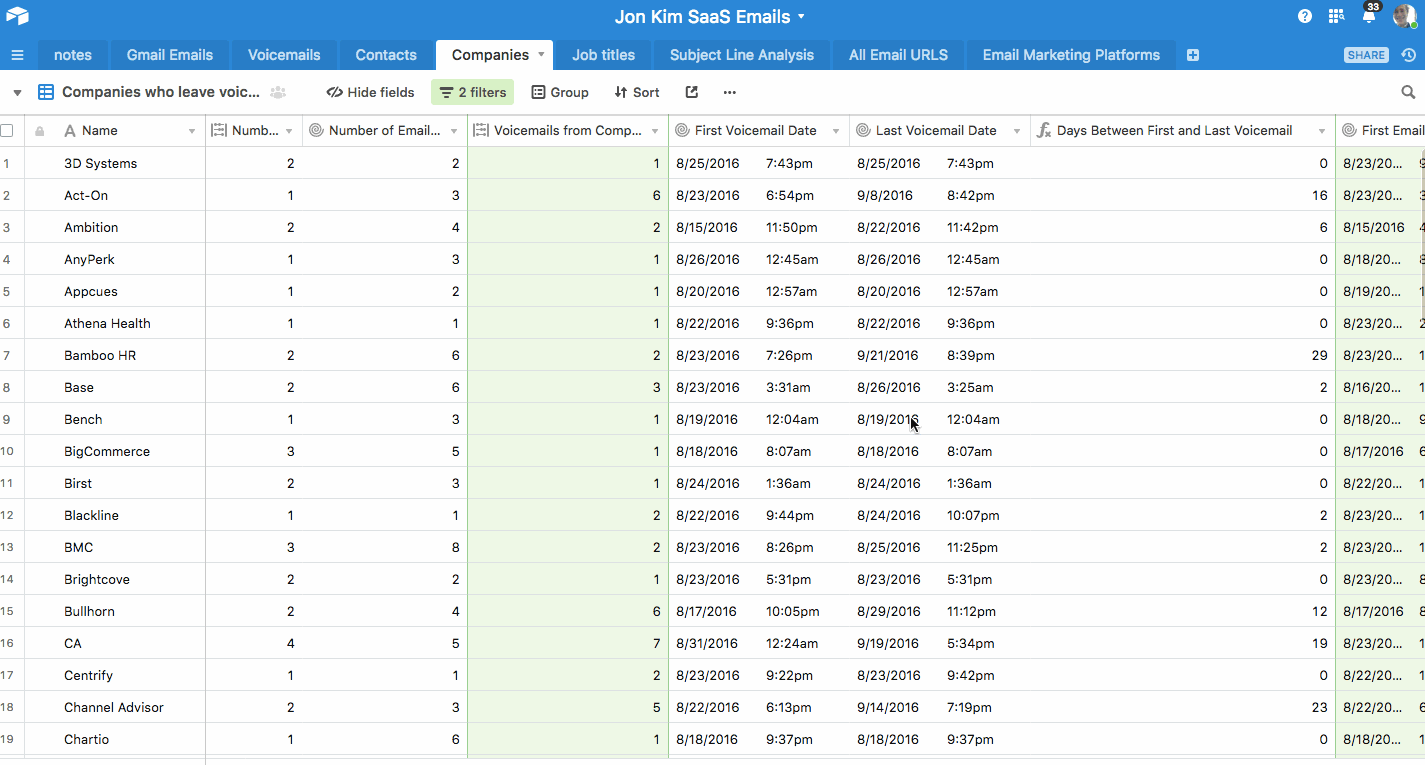
Setting up the numerous Airtable formulas and filters took me another solid week. With the data clean, organized, and ready to go, we started thinking about where we’d put it.
Creating the microsite
We came up with the domain name (insidesaassales.com) and product title (Inside SaaS Sales) by doing keyword research.
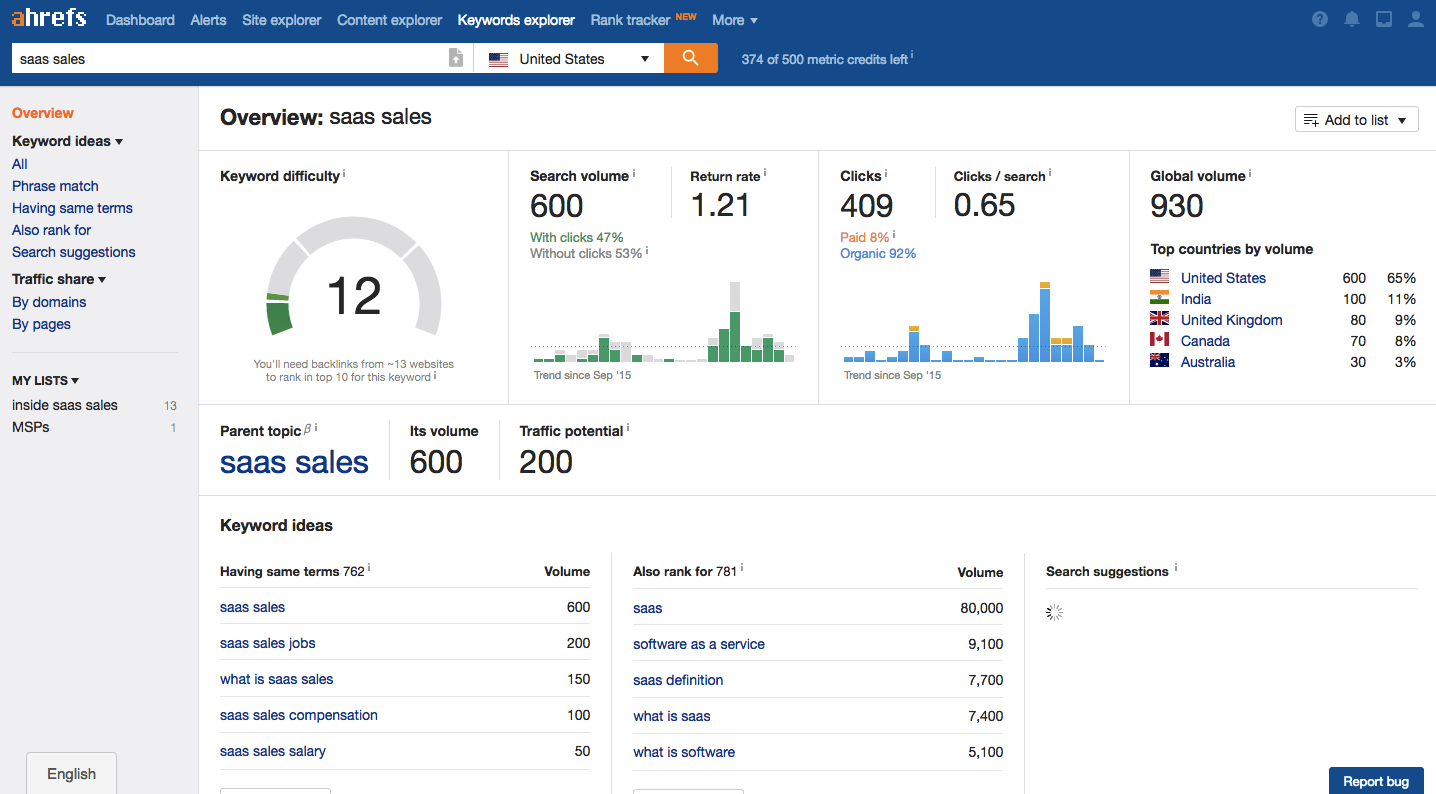
We wanted to be strongly affiliated with SaaS inside sales in the eyes of Google, and we wanted to show the expository nature with the word ‘inside’ in the title.
The next step was to decide on the site’s visuals. We chose blue (like the sky, where SaaS clouds live), and started going through a few iterations.

As nice as these logos are, they looked a little soft. We decided to change the color to green (like ).

Using a basic bootstrap theme as the starting point, we started to prototype the site’s design in Sketch.
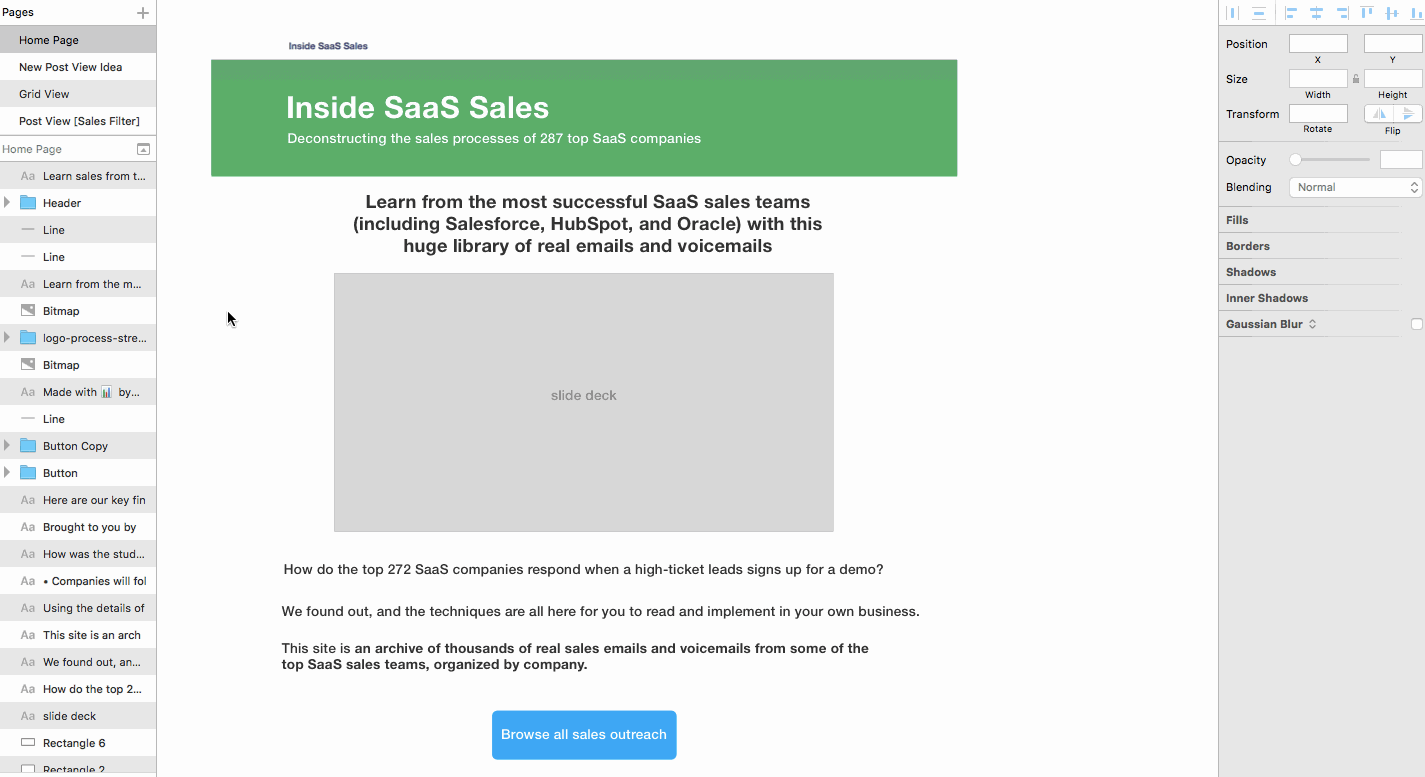
We knew a few things for certain:
- We wanted a grid page with company logos so users could easily browse by company
- We wanted each company’s page to be the full filterable sequence of emails they sent
- We wanted each email to be styled like an email from Gmail
With that in mind, we posted a job ad on Upwork for a WordPress developer. This is the ad copy:
Frontend WordPress Developer (CSS/PHP)
We are looking for a front-end WordPress developer experienced with HTML, CSS, and PHP to help develop a microsite.
The site will contain thousands of emails and voicemails as posts, which need to be structured on the front page of the site by their sender (company). For this to work effectively, we’ll need you to build a way to filter WordPress posts by their categories and tags, and display them dynamically as collapsible items on one page.
You’re able to:
- Use CSS to design a grid
- Build custom queries to display content according to tag/category rules
- Make a beautiful front-page for the site
- Help design a great layout for posts
You have:
- A good understanding of typography and CSS
- Basic knowledge of PHP
- Experience with WordPress development
We are aiming to have a working, presentable version of the website within the next month, so don’t hesitate to apply.
After hiring a developer, we managed the project in Trello and created cards and checklists for each task. Every Monday, we met with the developer to go over the cards he’d worked on and give our feedback.
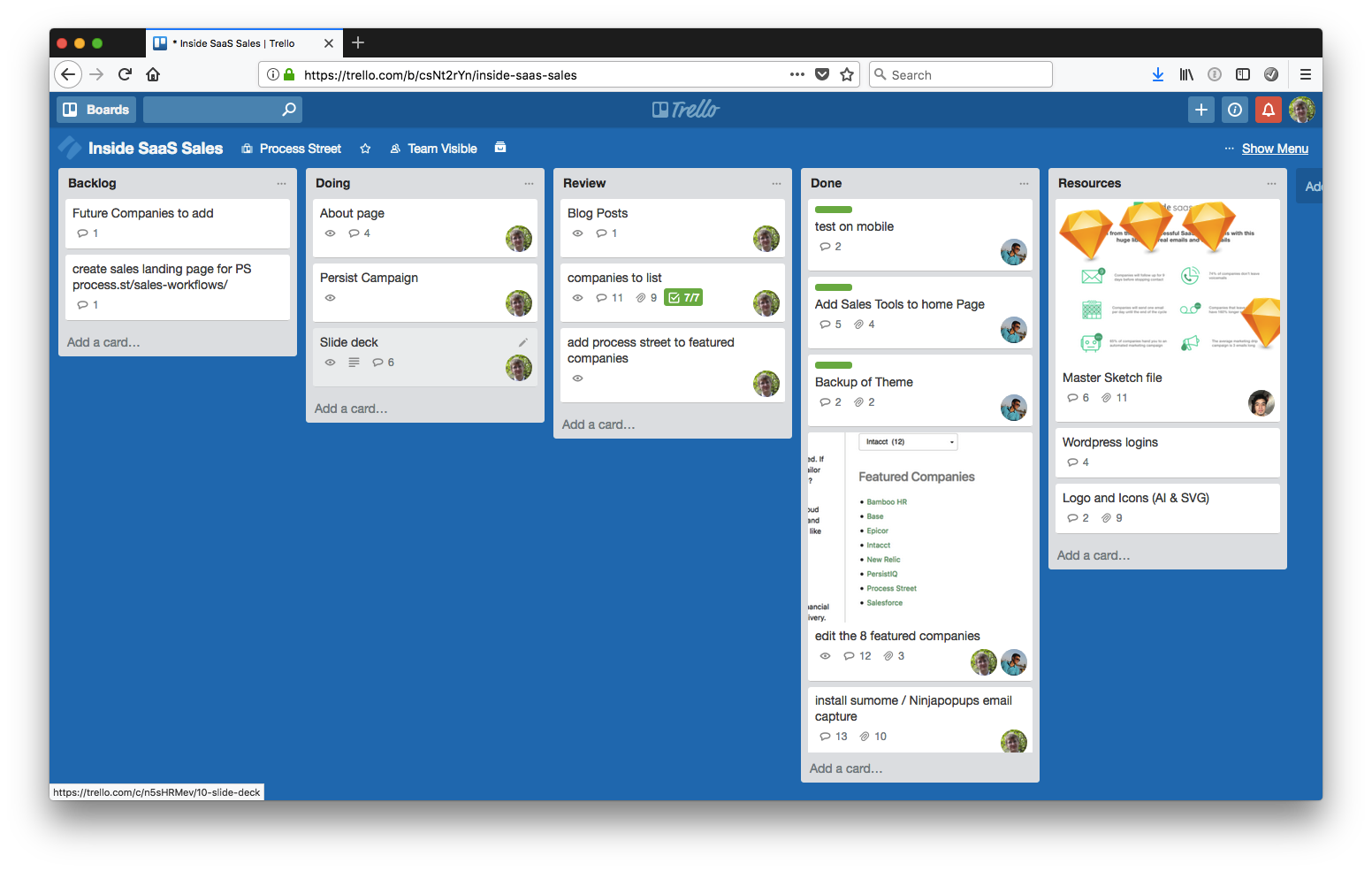
Filling the blank site with content (one post for each piece of communication, organized by company) was easy because the database could be formatted for WordPress import using the Best Import plugin. The site was ready a month later, leaving us with just the marketing tasks to do.
Creating extra marketing material
Inside SaaS Sales isn’t just a data set or a library of emails; it’s also a study of the trends we found. We found out the average length of an email, the most common phrases in subject lines, the average numbers of days between emails, and more. You can read about the full analysis in a blog post here. With all this data, we decided to create a slideshow we can embed on the landing page and upload it to Slideshare for extra distribution.
Slideshare
From a bullet-pointed list of findings, I drafted a basic (e.g. hideous) deck in Google Slides, created graphs for the slides in Google Sheets, and forwarded it onto our designer to make it look pretty.
This is the kind of thing I drafted up initially:
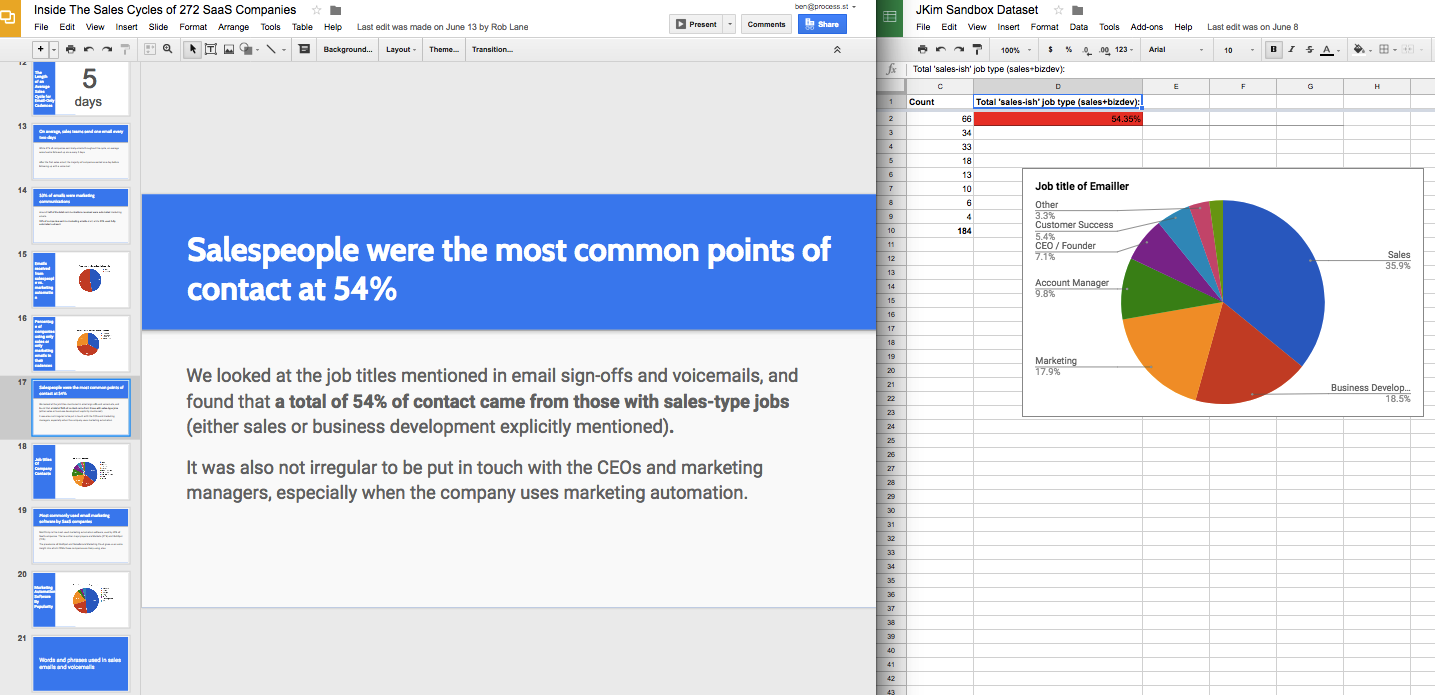
Thankfully, we have the talented Adam Mousa on board, who cleaned it up and made it look in-key with the rest of our branding:
Launch post on the Process Street blog
Whenever we publish a study with original data, we post the full write-up on the Process Street blog. In the past, we’ve done studies of SaaS pricing pages, startup landing page copy, jargon, and Twitter support.
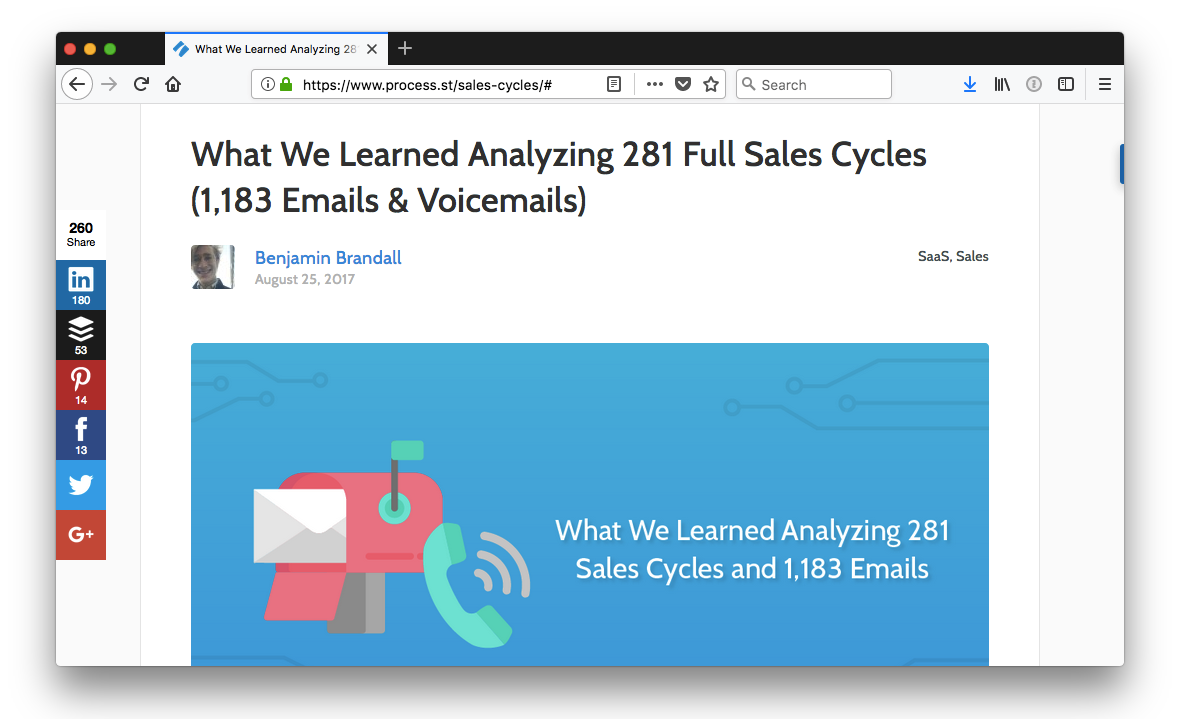
The posts follow a certain formula, which I outlined in this post. In summary, the format is:
- Introduction: background information on the scope of the study, and why it matters
- Methodology: how the data was collected, so the audience can make their own minds up as to the validity
- Summary of the key findings: a bullet-pointed list of each main data point (37% of emails are automated)
- Key point #1: an in-depth analysis of the first point
- Key point #2..n: analyze every key point
- Conclusion: here’s space for your own opinion. In general, what did you find? How can others use this data to make better choices?
(Note: depending on the complexity of your methodology, you might want to leave it until the end. While research papers typically explain methods early, writing for the internet is another world, and long methodology sections could make users leave without reading.)
Guest posts
One of our key marketing strategies is guest posting. It helps us build relationships, links, and awareness in places we’d otherwise not reach. To prepare for the Inside SaaS Sales launch, we wrote two dissections of the data that we then went to pitch to a select few sites: VC blogs, SaaS sites, sales blogs, startup publications, etc.
Since we only had one data set but multiple interested outlets, we needed to find something unique about the data for every post. For example:
- A post that summarizes the data in as few words as possible
- A post that looks at the sales techniques of just three companies
- A post that focuses on the automated emails only
If you’re doing a guest posting campaign to promote a product or a study, it’s best to brainstorm titles ahead of time so you have something to pitch in your emails.
To pitch guest posts, you first need a list of relevant publications and the details of whoever is in charge of submissions. We’re avid readers of SaaS material at Process Street, so we had an initial list of tech news publications, startup blogs, VC blogs, totaling around 20. These were our A list — we carefully wrote different pitches for each. For our larger B list, we exported data from a BuzzSumo search showing the domains which host the most shared SaaS and sales content.
We handed the list of domains to a team of virtual assistants so they could search for the submissions editors and find their email addresses. The process we use for finding email addresses is below:
You can also use a variety of tools to automate the email hunting process.
For more information on how to find guest posting opportunities, check out this guide I wrote. Keep reading until the last section of the post to find out how we organized our email outreach for the project.
Launching on Product Hunt
Product Hunt was the driving force behind the microsite’s success. Aside from a little bit of social traffic, everybody who found the site found it through Product Hunt. When you’re going to put all of your effort on one channel, it pays to be prepared. At least three weeks ahead of time we created the screenshots, gifs, and copy to be sure we made an impact.
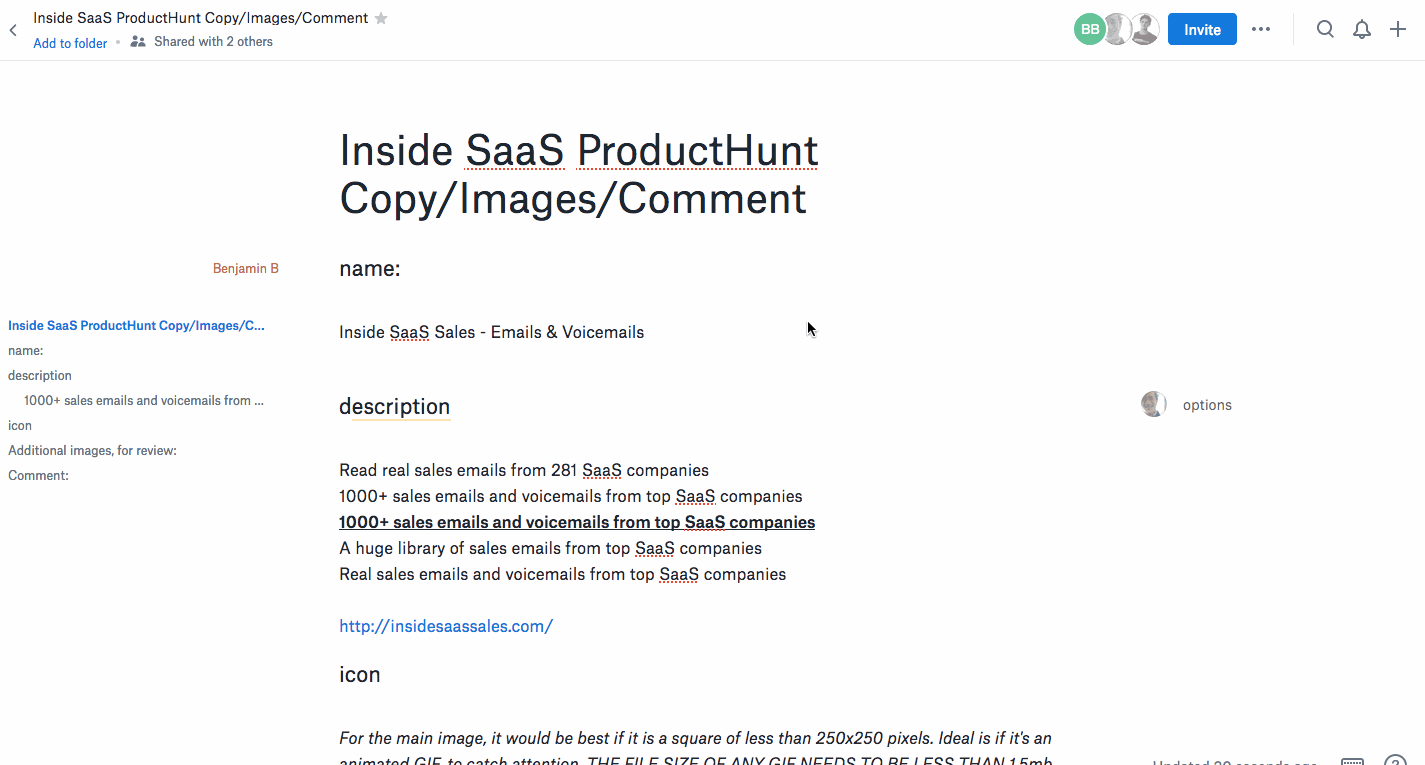
We collaborated in Dropbox Paper to write a product description, finalize the image assets, and write a maker’s comment. All in all, we needed:
- Product title
- Product description (60 characters maximum)
- A selection of topics
- Thumbnail icon (600×600, gifs less than 3mb)
- Gallery images (3 screenshots, gifs, or graphics with text that best display the product)
- Maker’s comment
Find out more information here about how to launch on Product Hunt from the people behind the site.
Email outreach on launch day and beyond
We used email outreach for two reasons: to contact the most responsive companies involved in the study to let them know, and to contact publications with guest post pitches.
Since Inside SaaS Sales was basically free advertising for these companies, we figured we could get their support on launch day. I selected 50 or so of the companies that had the highest email and voicemail counts in the study, and sent them a quick notification email.
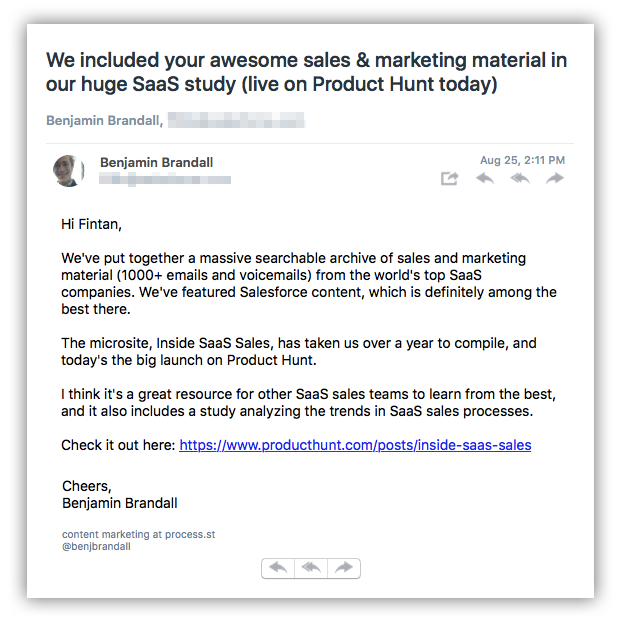
Since we had many of these companies already in our CRM (and we wouldn’t need to follow up automatically), we used Close.io to send these outreach emails.
The other side of our email outreach was guest post pitching. We loaded our list of contacts into PersistIQ along with a pitch template. The A-list contacts like TechCrunch received personalized emails, but all emails were a slight variation on the template below:
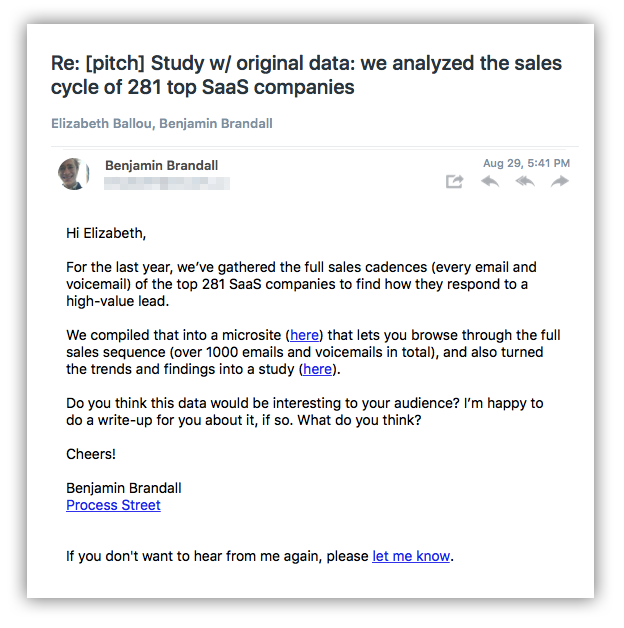
(Note: the ‘re:’ in the subject line appears because that email got a reply; unlike plenty of the companies we studied in Inside SaaS Sales, we don’t use false ‘re:’s in our subject lines. )
Optimizing after launch day
A successful launch followed by a guest posting campaign could really help your product become something people use for the long-term, not just on the one day it was featured on Product Hunt. Assuming you managed to rank for some target keywords and get a link back to your microsite on some high-authority blogs, you’re going to want to think about how you can:
- Improve the site based on launch feedback and outreach responses
- Leverage the microsite’s traffic to get attention for your main product
Since we got some great feedback on Product Hunt, we’ve got suggestions and ideas that could help us make Inside SaaS Sales even better, and help it grow over the long term:

Plus, we captured leads with a pop-up offering sales checklists inside Process Street:
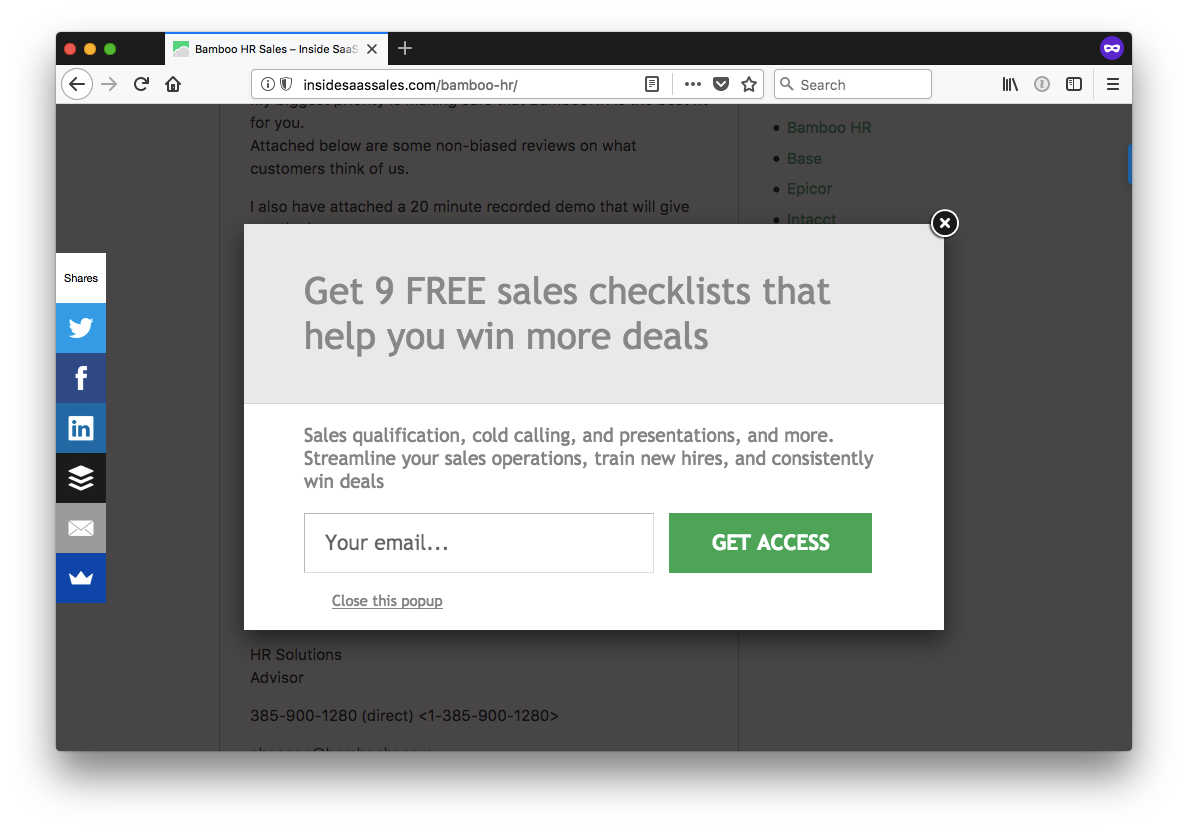
I hope this guide has helped you get started with creating and promoting your own microsite! If you end up launching a microsite, feel free to show me in the comments!







Benjamin Brandall
Benjamin Brandall is a content marketer at Process Street.